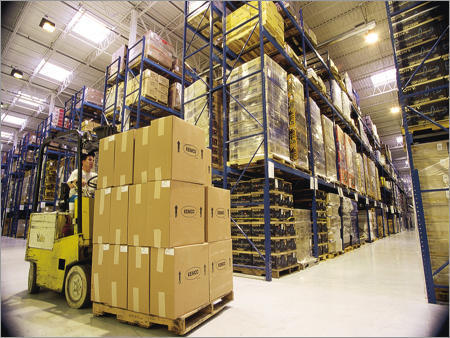
The challenges and opportunities in the Indian warehousing industry
Introduction to Warehousing Services in India
The Indian warehousing industry is evolving rapidly, presenting both challenges and opportunities for businesses. The industry is expected to grow at a compound annual growth rate (CAGR) of 15% between FY2019 and FY2024, driven by the country's strong economic growth and the rise in e-commerce activity.
However, the industry faces several challenges, including a shortage of quality warehouse space, lack of standardization, and high costs. These challenges must be addressed in order to allow the industry to reach its full potential.
Warehousing is an essential part of the supply chain process, enabling businesses to store goods securely and efficiently. In India, the warehousing industry is growing rapidly due to the country's strong economic growth and the rise in e-commerce activity. However, the industry faces several challenges, including a shortage of quality warehouse space, lack of standardization, and high costs. These challenges must be addressed in order to allow the industry to reach its full potential.
Challenges Facing the Indian Warehousing Industry
The Indian warehousing industry is facing a number of challenges, including:
1. Lack of skilled labour: There is a lack of skilled workers in the warehousing industry, which makes it difficult to find staff who can operate and maintain warehouses effectively.
2. Limited space: The amount of land available for warehouses is limited in India, which constrains the growth of the industry.
3. High costs: Warehouse construction and operation costs are relatively high in India compared to other countries. This makes it challenging for companies to be profitable and expand their operations.
4. Lack of technology: The use of modern technology is not widespread in the Indian warehousing industry, which limits productivity and efficiency.
Economic Benefits of Warehouse Solutions for Businesses
There are numerous economic benefits that businesses can reap by implementing warehouse solutions. Perhaps the most obvious benefit is the cost savings associated with warehousing operations. By optimizing their storage and inventory management processes, businesses can reduce their overall costs significantly. In addition, businesses can also improve their customer service levels by reducing lead times and increasing the accuracy of orders.
Other economic benefits of warehouse solutions include increased efficiencies in production and distribution processes, as well as improved decision-making capabilities due to real-time data availability. Additionally, businesses that have implemented warehouse solutions tend to be more nimble and adaptable to changes in market demand or other business conditions. As a result, they are able to better compete against larger businesses that may not have invested in such solutions.
Types of Warehouse Solutions Available in India
There are a variety of warehouse solutions available in India, each with its own set of benefits and drawbacks.
One popular option is the public warehouse, which is owned and operated by a third-party logistics provider. These facilities are typically large and offer a range of services, such as order fulfillment, inventory management, and transportation management.
Another option is the private warehouse, which is owned and operated by the company that uses it. Private warehouses can be customized to meet the specific needs of the business, but they may be more expensive to operate than public warehouses.
A third option is the bonded warehouse, which is used to store goods that are subject to import duties or other taxes. Bonded warehouses are typically operated by customs brokers or other licensed professionals.
Each type of warehouse has its own advantages and disadvantages, so it's important to choose the right one for your business needs.
Advantages of Outsourcing Warehousing Services in India
There are many reasons why outsourcing warehousing services in India can be advantageous for businesses. First, India has a large and growing population, which means that there is a large potential market for businesses to tap into. Additionally, India's infrastructure is improving, making it easier for businesses to set up and operate warehouses in the country. Additionally, India's labor costs are relatively low, making it an attractive option for businesses looking to minimize their costs. Finally, the Indian government is supportive of foreign investment in the country, which can make it easier for businesses to establish themselves in India.
Steps for Choosing a Suitable Warehouse Solution
The Indian warehousing industry is expected to grow at a compound annual growth rate (CAGR) of 13% between 2015 and 2020. The sector is currently valued at Rs 50,000 crore and is expected to reach Rs 1,30,000 crore by 2020. With the growth of the e-commerce sector in India, the demand for Warehousing Services in India is also increasing.
There are a few things to consider when choosing a warehouse solution:
1. Location: The location of the warehouse should be easily accessible by road, rail or sea. It should also be close to the markets that it will serve.
2. Size: The size of the warehouse should be large enough to accommodate the anticipated volume of goods.
3. Infrastructure: The warehouse should have good infrastructure including roads, power supply, water supply, etc.
4. Safety and security: The warehouse should have adequate security arrangements to protect the stored goods from theft or damage.
Conclusion
In conclusion, India's warehousing industry is full of untapped potential. The challenges faced in the industry need to be addressed in order for it to realise its full potential. With adequate investments, modernised infrastructure and processes that are standardised across all states, the Indian warehousing landscape can become a force to reckon with globally. Increased collaboration between stakeholders will help create a more stable and efficient ecosystem that could benefit companies from around the world.